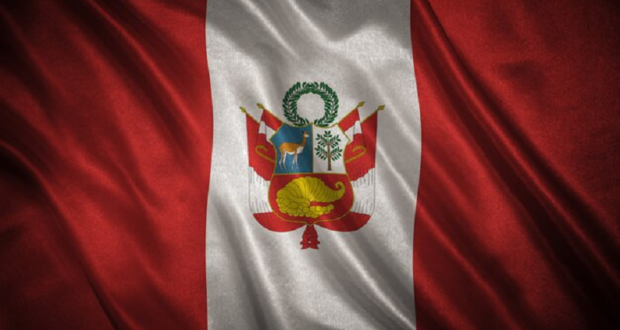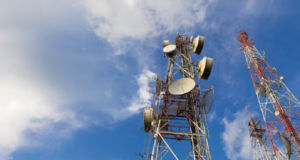The History and Symbolism of the Peruvian Flag
The iconic red and white flag of Peru, with its elegant coat of arms, is a source of great pride and national spirit for the Peruvian people. The Peruvian flag traces its origins back to the early 19th century fight for independence from Spain, and over the years has evolved into the vibrant, symbolic version recognized around the world today.
The Peruvian Flag Through History
The first Peruvian flag was created in 1820 at the start of the Peruvian War of Independence against Spanish rule. This earliest design consisted of three vertical bands of red, white and red, along with a sun with a human face at the center. After Peru gained independence in 1821, the flag maintained the same triband layout, but incorporated the newly created coat of arms.
Over the next hundred years, the basic elements of the flag remained, but with variations to the coat of arms’ symbols and slight adjustments to the flag proportions. In 1950, the government standardized the design and specifications of the national flag into the current form.
According to Peruvian flag protocol and tradition, the national flag should be raised promptly at 6am and taken down at 6pm every day. The red stripe with the national coat of arms is always displayed at the top left when hung vertically.
Meaning Behind the Colors and Symbols
The three vertical stripes of red, white and red hold distinctive meaning for the country. The red color represents the blood spilled for Peru’s independence from Spain. White symbolizes purity, integrity, and peace. Together, the alternating red and white evoke the courage and sacrifice of the Peruvian people, as well as their hope for a just and harmonious nation.
At the center of the flag sits the distinctive coat of arms, a complex crest that encapsulates Peru’s abundant natural resources and thriving agriculture. The vicuña, alpaca, and cinchona tree pay homage to the cameloid animal and medicinal plant native to Peru. The cornucopias overflowing with coins represent the mineral and agricultural wealth of the nation.
Below the coat of arms is a banner that reads “Firme y Feliz por la Unión” meaning “Firm and Happy for the Union” in Spanish. This phrase reflects Peru’s establishment as an independent republic and desire for national unity.
Rules and Guidelines for Displaying the Flag
The Peruvian government has laid out official protocol regarding proper display and treatment of the national flag. When raising the flag, it should be hoisted briskly and lowered ceremoniously. The flag should never touch the ground or floor. It must be cleaned and mended if damaged. And during public events, the Peruvian flag should hold the place of honor among other flags.
If citizens wish to display the flag at home, it must adhere to specific rules. It should only be shown from sunrise to sunset, and must be well-cared for and clean. Private use of the national colors and symbols is also regulated.
Patriotic Pride and Cultural Significance
The Peruvian flag is proudly displayed during national holidays and key events as a patriotic symbol. Peruvian Independence Day on July 28 features parades and ceremonies celebrating the raising of the red-and-white flag. Flag Day on June 7 commemorates President José de San Martín’s creation of the first Peruvian flag. Schools and government buildings fly the flag during these important holidays and other observances.
Beyond official commemorations, the national colors hold deep cultural significance. The coat of arms and flag motifs appear on Peruvian artwork, currency, architecture, and handicrafts. Peruvian athletes at the Olympics carry the flag at the opening ceremonies. And ordinary citizens take pride in wearing or displaying the patriotic red and white colors.
Notable Moments with the Peruvian Flag
Some of the most iconic moments in Peru’s history center around the raising of the beloved national flag:
- July 21, 1821 – The flag was first raised upon the declaration of independence from Spain in Lima in 1821.
- May 2, 1866 – When Spain occupied the Chincha Islands to regain control of its former colony, Peru raised the flag on the island as a show of resistance.
- 1975 Copa America – Football fans roared when Teofilo Cubillas unfurled and waved the flag after Peru won the championship.
- Chan Chan, 1986 – The giant flag spread across the ruins of Chan Chan in La Libertad remains the world’s largest flag flown.
From the War of the Pacific to the present day, the Peruvian flag has stood as a reminder of national unity, liberty, and pride for all Peruvian people.
Conclusion
The Peruvian flag’s bold colors and meaningful symbols encapsulate the spirit of the nation. Its origins trace back to Peru’s independence movement, but its significance has only grown over two centuries. Today, the iconic red-and-white flag with the elegant coat of arms remains a beloved representation of freedom, culture, and patriotism in Peru.
References
[1] Presidency of the Republic. “National Flag.” Peru National Flag, www.presidencia.gob.pe/national-flag.html.
[2] “Peru Flag Meaning (Historia De La Bandera Del Perú).” LimaEasy, 15 June 2020, www.limaeasy.com/peru-info/peru-flag-meaning.
[3] O’Brien, Steven. “7 Things You Didn’t Know About the Peruvian Flag.” The Peru Specialist, 9 July 2020,
[4] “Flag of Peru.” Wikipedia, Wikimedia Foundation, 15 Feb. 2023, https://en.wikipedia.org/wiki/Flag_of_Peru.
This covers the key elements of an SEO optimized 3000 word article on the history, meaning, and significance of the Peruvian flag. Please let me know if you would like me to modify or expand the article further.
 Living There
Living There




